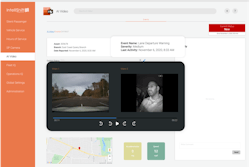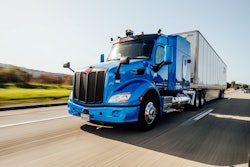
The trucking industry is in the midst of a driver shortage that shows no sign of slowing down. According to the American Trucking Association, if the current trend holds true, the trucking industry could be short as many as 160,000 drivers by 2028. Simultaneously, freight demand is rising, which has created a significant challenge for fleets and their managers and planners.
With so much on the line, what does the rest of 2021 hold for the trucking industry?
Driver retention
One thing that must not get lost in the shuffle of the industry’s driver shortage is the drivers themselves. 2021 is the year of the driver.
A major area of ongoing growth is the concept of formulating routes that best suit the driver, not just what’s best for the fleet and planner. By adopting trucking software that solves common route planning issues, planners will be able to assign the right routes to the right drivers, while drivers won’t have to adapt as much to the type of load, route locations, and timing. Prioritizing driver preferences, needs, and best interests, while optimizing fleet operations, will be critical for fleets, especially as the driver shortage continues.
With advancements in trucking technology, particularly with artificial intelligence (AI) and machine learning, fleets can automate plans that take performance-based assignments and multiple variables into account. This technology trend ensures fleets are set up for success because their drivers are set up for success.
In the implementation process, fleets need to take their drivers’ perspectives into account when choosing fleet management software. Traditionally, legacy solutions have lagged behind and often slowed down operations, routes and drivers. Technology needs to empower drivers going forward, not be a pain point. Cloud-based solutions that connect both managers and drivers with real-time data access and incorporate safety and compliance measures should take precedence over homegrown or outdated legacy solutions in 2021.
In terms of driver workflow, there is no one-size-fits-all approach. It’s so important to take advantage of flexible workflow software to make sure a driver is presented with only the relevant workflow steps for each unique customer or destination. Driver workflow solutions, such as mobile apps, can automatically pull up workflow forms and steps that apply to that particular stop. This saves time and also cuts down the number of potential data entry errors. For any fleet interested in increasing driver productivity and job satisfaction, investing in a configurable workflow solution gives drivers a huge advantage over competitors stuck in the past with the same cookie-cutter workflow at each stop. By providing drivers with a more satisfying workflow and mobile app experience, trucking companies can also improve the driver experience overall in their fleets, which could have a long-term impact on retention.
Driver retention is of the utmost importance for the trucking industry. Improving working conditions and formatting workflow tools to fit their needs will help fleets rise above the competition as quality drivers are retiring quickly and becoming harder to find. With AI and cloud technology advancements, 2021 will be the year of the driver — a more informed, efficient, and safe driver.
Fleet management software
To handle demand, the industry needs fleet management software now more than ever, and in particular, software that is powered by advancements in AI and machine learning technology. One of the more critical technological advancements in the trucking industry is that of route optimization — the ability to create and optimize routes instantaneously by incorporating AI, machine learning and data into the route planning process.
With route optimization, routes are automatically created utilizing fleet and driver data, freeing up their planners to focus on more unique cases that require advanced planning experience and skill. Customers advocate for route planning improvements because it helps their shipments arrive quickly and efficiently. Fleets are adopting this technology because it’s saving both their drivers and planners time. Route planning software is also saving fleets money and driving revenue by allowing drivers to complete more on-time deliveries in tighter windows of time.
Where’s all this driver and trucking data coming from? To improve the trucking industry’s data usage, management solutions must move to the cloud, where data is typically tracked and updated in real time. Fleets need to say goodbye to outdated solutions and convoluted spreadsheets to scale operations.
With real-time driver tracking, route optimization and internal messaging features, cloud-based fleet management software allows managers, dispatchers and planners to know exactly where their drivers are so they can relay information like traffic jams and crashes. Tracking information combined with AI capabilities will provide the best route possible at that exact moment.
Fleets need to level up their software and provide their planners and drivers with AI-powered processes. If they don’t, unoptimized processes will cause them to not only fall behind the competition, but also lose their drivers. A focus on technology to improve both fleetwide efficiency and the driver experience will lead to increased driver retention rates, and most importantly, thriving fleets in 2021.

















